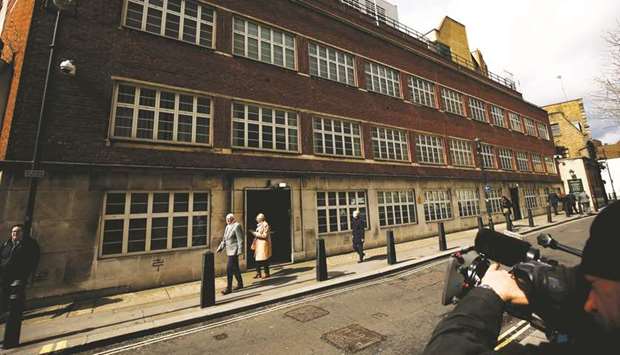Hidden in plain sight, GCHQ’s secret former London office has been revealed as a nondescript postwar block close to the centre of power in Westminster.
As the monitoring agency moves to another location in the capital, it has disclosed that for more than half a century its staff worked at a site in Palmer Street, opposite a busy entrance to St James Park underground station and close to the ministry of justice.
GCHQ, which now styles itself as the Intelligence, Cyber and Security Agency, has its main headquarters in Cheltenham. The codebreakers left Bletchley Park, near Milton Keynes, after World War II.
The director of GCHQ, Jeremy Fleming said: “As we depart our Palmer Street site after 66 years, we look back on a history full of amazing intelligence, world-leading innovation and the ingenious people who passed through those secret doors. Then as now, it’s a history defined by the belief that with the right mix of minds, anything is possible.”
GCHQ no longer operates from the drab red brick and stone building. It has maintained a London presence at another location and is extending its network of sites, with a secure facility in Manchester due to open later this year.
GCHQ also has offices in Bude in Cornwall, Scarborough, Lincolnshire and Harrogate. In 2017, the National Cyber Security Centre (NCSC), which is part of GCHQ, opened its headquarters near Victoria in London.
This year, the Queen commemorated GCHQ’s centenary by unveiling a plaque at Watergate House, the first home and birthplace of the organisation. The Government Code & Cypher School (GC&CS), as it was known at the time, was established on November 1, 1919, as a peacetime cryptanalytic unit made up from staff from the Admiralty’s Room 40 and the War Office’s MI1(b).
In 1939, it was renamed the Government Communications Headquarters in order to disguise its mission. During World War I, GCHQ staff moved to Bletchley Park, where they decrypted German messages including those encrypted on Enigma machines. Breaking the codes made a significant contribution to the eventual Allied victory.
In the early 1950s, after briefly moving its headquarters to the London suburbs of Eastcote, GCHQ was transferred to Cheltenham. That meant it required a central London location to handle secret paperwork and provide a regular base for its director close to the heart of government.
The ministry of works provided a newly-built, government-leased building on Palmer Street. GCHQ moved into its new London home in 1953, and a number of different teams operated from the building over the following decades.

The former headquarters of Intelligence, Cyber and Security Agency GCHQ, is seen in Palmer Street, after the agency revealed the location, following its departure to new undisclosed offices, in London yesterday.
